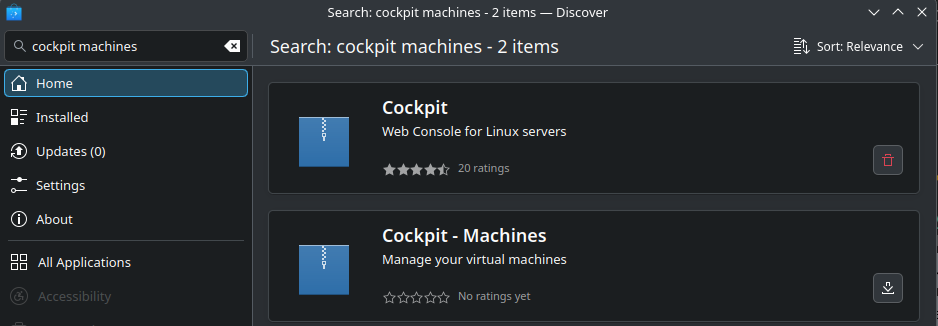

Seems like Leni, Davel and Jaaaane are all alive and posting, not sure who you think is dead?
I think those living the drama enjoy it and thrive from it, seeing as they haven’t just created a new account where they would be free from it.
#nobridge


Seems like Leni, Davel and Jaaaane are all alive and posting, not sure who you think is dead?
I think those living the drama enjoy it and thrive from it, seeing as they haven’t just created a new account where they would be free from it.


That sounds reasonable and I can understand the decision.
theguardian.com only gave us this for context:
The chorus of Conte’s empowerment anthem contains the phrase “serving kant” – a queer or drag slang phrase roughly meaning “to express boldness”.


With the abundance of languages in the EU I imagine that allows us to find quite many words that are phonetically similar to rude words of other languages.
Wouldn’t it be fun to see if it’s only the English language that are afforded such privileges of denial?
On the other hand I don’t really care what happens in the eurovision song contest.


Nevermind, it’s been abandoned by the company that contributed the most to it.
https://lwn.net/Articles/882460/


I haven’t tried it myself but there is libreoffice online
https://www.libreoffice.org/download/libreoffice-online/
https://hub.docker.com/r/libreoffice/online/


Their site works fine without allowing javascript, that way it turns into quite a simple thing too!
A favourite of mine on that theme is from Boondock Saints (1999)
Now we must all fear evil men.
But there is another kind of evil.
Which we must fear. Most.
And that is the indifference of good men.


Does the distro I pick matter?
Packages
When you install a distro it will have repositories of apps that you can easily install and easily keep updated using either the GUI (GNOME Software for GNOME, Discover for KDE) or the package manager in terminal (dnf in Fedora, apt in kubuntu and mint). It’s similar to how you install apps on a smartphone.
The good thing about the apps from the default repository is that they’re (in theory) tested to work well with the distro.
You can also install applications from other sources when necessary.
Update Frequency and new tech
Another difference is how new kernel and software you get from the repos.
The latest Debian Stable runs kernel 6.1 while Fedora just updated to 6.12 and arch has been running 6.12 since december.
If you’re running the newest hardware then the chance of having drivers available automatically increases with a newer kernel.
Company-run distros and alternatives:
In my opinion Ubuntu is the ones doing the most forcing as of now, and even they are angels compared to Microsoft.
Fedora had discussions about including opt-out Telemetry to aid them getting data to improve the distro. They listened to community feedback and backpedaled that into opt-in metrics:
https://fedoraproject.org/wiki/Changes/Telemetry
https://fedoraproject.org/wiki/Changes/Metrics
Debian and Arch are both examples of distros without enterprise involvement and that have no upstream distro that can affect their releases.
Map of distros here: https://upload.wikimedia.org/wikipedia/commons/1/1b/Linux_Distribution_Timeline.svg
Stability of the distro:
Of your frontrunners I’ve only run Fedora but that has been stable and been working well for me for my primary PC. So has Debian which I run on my servers (I have a Debian VM running Portainer for dockers, one for running Jellyfin and a third for Forgejo).
Monitor support
Multi monitor support
I don’t have the desktop space for double monitors personally, but I’ve heard that KDE 6 (Plasma) handles multi monitor support well.
HDR
Should be working since November
Nvidia is a whole lot simpler to use than people make it sound like, though I’ll stay team red:
https://rpmfusion.org/Howto/NVIDIA#Current_GeForce.2FQuadro.2FTesla
Fedora guide for Nvidia drivers unless you’re running a really old card:
sudo dnf update -y # Update your machine and reboot
sudo dnf install akmod-nvidia # Installs the driver
sudo dnf install xorg-x11-drv-nvidia-cuda #optional for cuda/nvdec/nvenc support (required for Davinci Resolve)


Regarding HoudiniFX it seems they have Linux installs, and a free (with watermark) version for hobbyists - https://www.sidefx.com/products/houdini-apprentice/
Other than that I’d say Blender is the goto app, showing up as one of the most popular apps in the Discover app.


My recommendation would be to use clonezilla or a similar tool to make an image of your windows install and save that on the external ssd.
Then I would install Fedora KDE or whatever’s your poison on the internal drive.
If you wanna switch back to windows then you can always use clonezilla, or your tool of choice, to restore the image.
You could also use KVM/Qemu in your linux distro to restore the image into a windows vm.
virt-manager gives you a desktop gui while cockpit + cockpit-machines gives you a nice webui for handling virtual machines in linux.
Clonezilla guide, for both linux and windows
https://www.linuxbabe.com/backup/how-to-use-clonezilla-live
Both Cockpit and Virt-Manager are available in Fedora KDE’s Discover app if you prefer GUI installs:
Cockpit

Virt-Manager

Reason I went or self-hosting Forgejo is to know it when federation comes along for real.
I’d love being able to federate my self-hosted Forgejo with my friends self-hosted Forgejo servers.
https://forgejo.org/2025-01-monthly-update/#federation


I’m a big fan of using https:// in Mull on my Android, and in Firefox on my PC.
Never been a fan of installing more apps then necessary.
Linux Routing Fundamentals
Linux has been a first class networking citizen for quite a long time now. Every system running a Linux kernel out of the box has at least three routing tables and is supporting multiple mechanisms for advanced routing features from policy based routing (PBR), to VRFs(-lite), and network namespaces (NetNS). Each of these provide different levels or separation and features, with PBR being the oldest one and VRFs the most recent addition (starting with kernel 4.3).
This article is the first part of the Linux Routing series and will provide an overview of the basics and plumbings of Linux routing tables, what happens when an IP packet is sent from or through a Linux box, and how to figure out why. It’s the baseline for future articles on PBR, VRFs, and NetNSes, their differences as well and applications.


Shooter had a hunting license and used his own hunting weapon for the attack. He had no known affiliations with criminals and had no criminal records of his own. He had no income during 2023 according to his tax statements.
Source https://www.svt.se/nyheter/inrikes/det-har-vet-vi-om-misstankte-garningsmannen-i-orebro


Note that the Qur’an burnings is not what they were on trial for, but for what was said during the events.
Also, Tingsrätten is filled with laymen and almost always appealed in these kind of cases.
Criticism: Bundling together
Freedom of expression expert Nils Funcke believes that there are still question marks about how far freedom of expression extends.
– If you look at what Momika and Najem say in the transcription found in the preliminary investigation, I would say that Najem speaks about the Koran, about Muhammad and about the religion of Islam, and I think that falls within a broad freedom of expression.
I think that Najem and Momika’s statements are lumped together and thus Najem is blamed for what Momika said.According to Mark Safaryan, Salwan Najem’s lawyer, the verdict will be appealed.
https://www.svt.se/nyheter/lokalt/stockholm/nu-faller-domen-efter-koranbranningar-i-stockholm


SnappyMail seem to be a fork of Rainloop and both Rainloop and Snappymail appear to allow multiple providers - https://snappymail.eu/
Cypht seems to be a similar solution where you selfhost a webserver that acts as a web client to external email providers - https://www.cypht.org/documentation/
I find nothing about push notifications for either of those solutions though, and I’m not sure about how much the webclients cache.
Uconsole bigger one - https://www.clockworkpi.com/home-devterm
Beepberry - https://beepy.sqfmi.com/
https://liliputing.com/beepberry-is-a-79-hackable-pocket-computer-kit-with-a-blackberry-keyboard/Colorberry - https://www.elecrow.com/colorberry.html
https://github.com/hyphenlee/colorberryPC Pilet old but cool looking one - https://soulscircuit.com/pilet
https://www.raspberrypi.com/news/pilet-mini-pi-5-modular-computer/ESP32 - ESP32 is a SoC, example of handheld using it is the LILYGO T-Deck Plus - https://lilygo.cc/products/t-deck-plus-1
https://linuxgizmos.com/updated-t-deck-plus-an-esp32-handheld-device-with-gps-and-lora-support/Mecha Comet with the switchable keyboards - https://mecha.so/comet
https://www.geeky-gadgets.com/modular-linux-handheld-mecha-comet/
Some links to help checking out the handhelds mentioned.


Professionally on a non-recurring issue - absolutely.
With my stuff at home? Only if the wife suffers from the downtime.


And here’s some more info about the disgusting law that came into force this friday:
https://www.amnesty.org/en/latest/news/2024/12/iran-new-compulsory-veiling-law-intensifies-oppression-of-women-and-girls/
And in more languages than just Swedish too.
English version of the brochure.
More in English here: https://www.msb.se/en/advice-for-individuals/